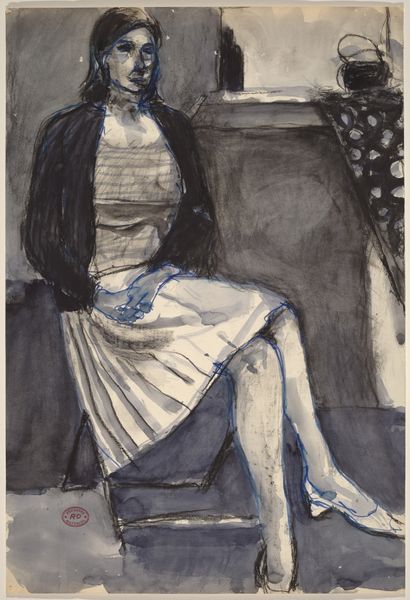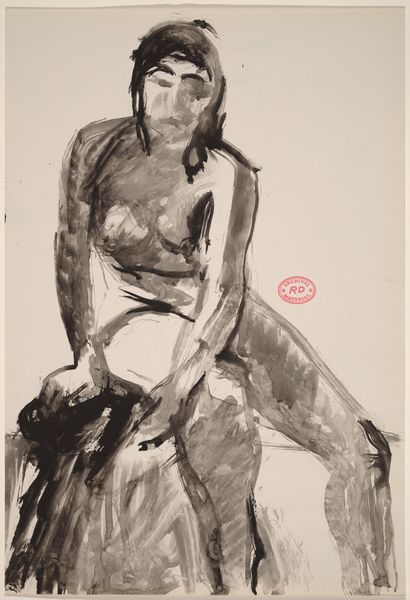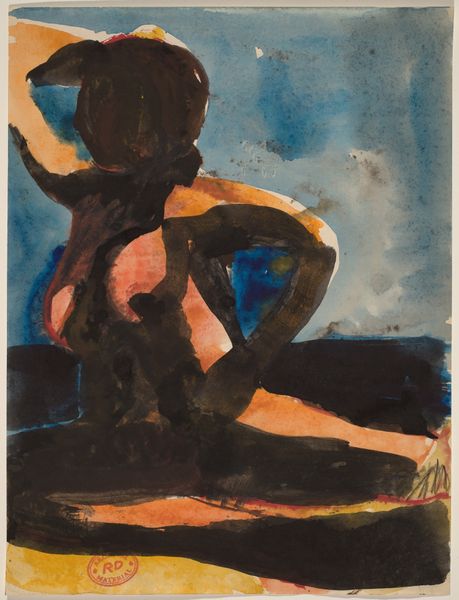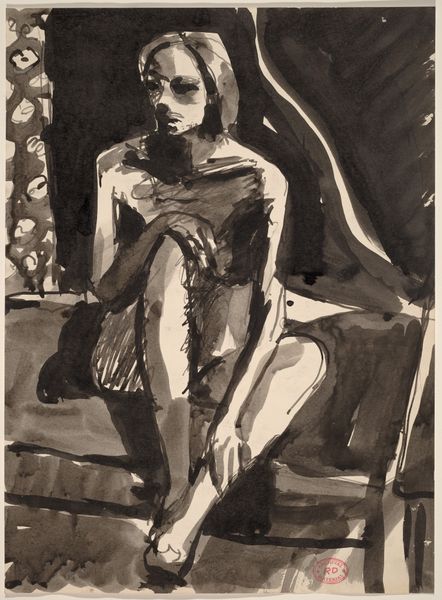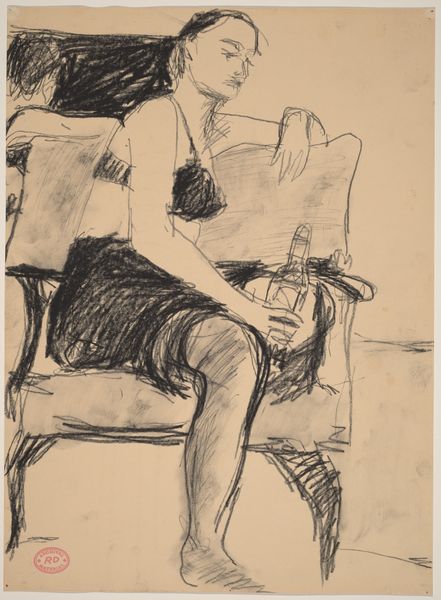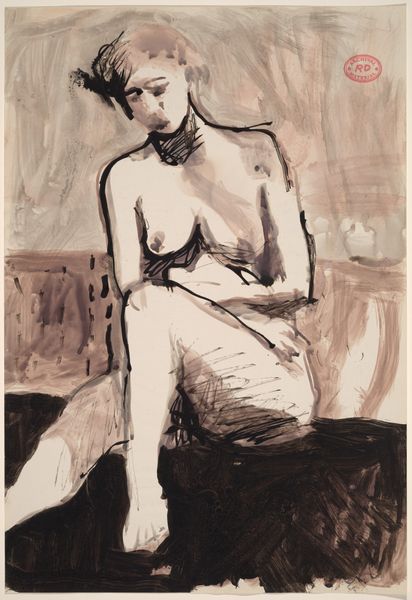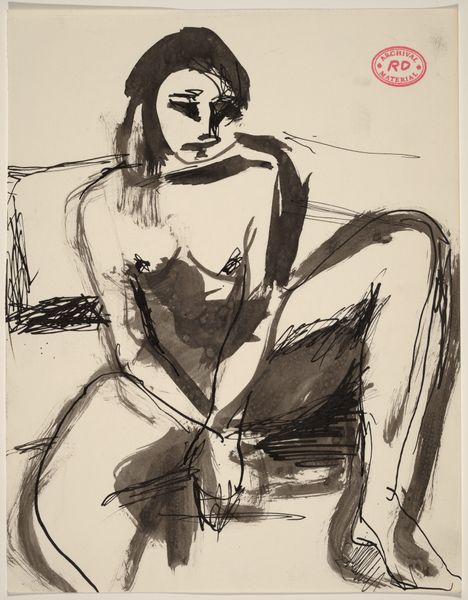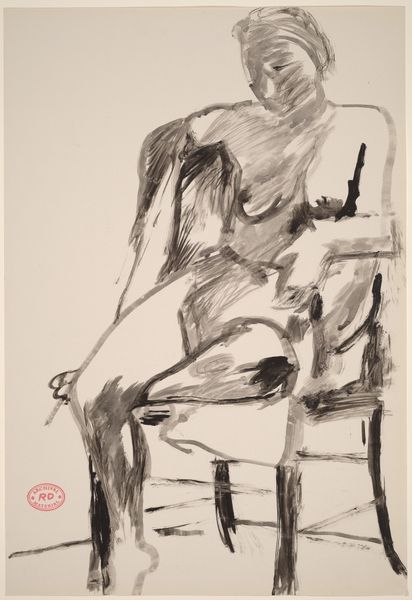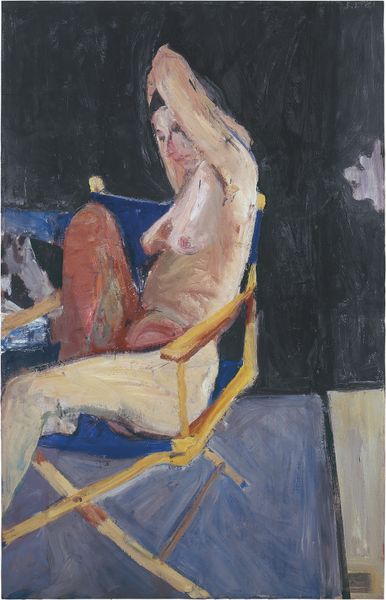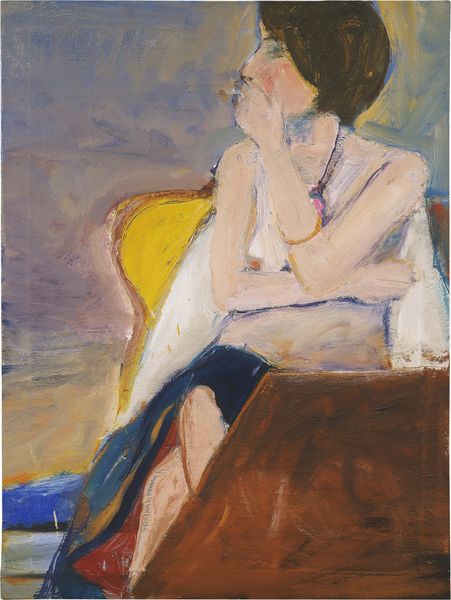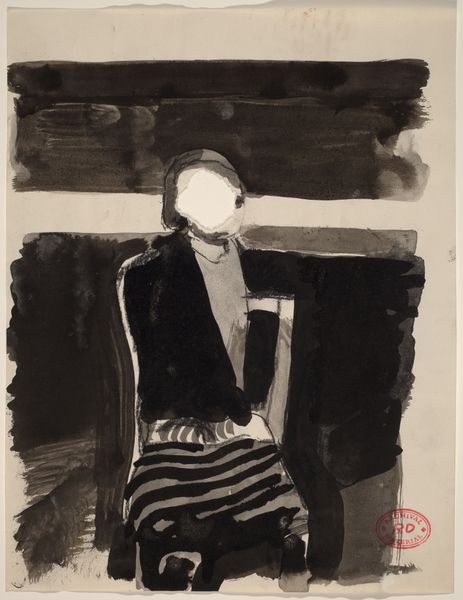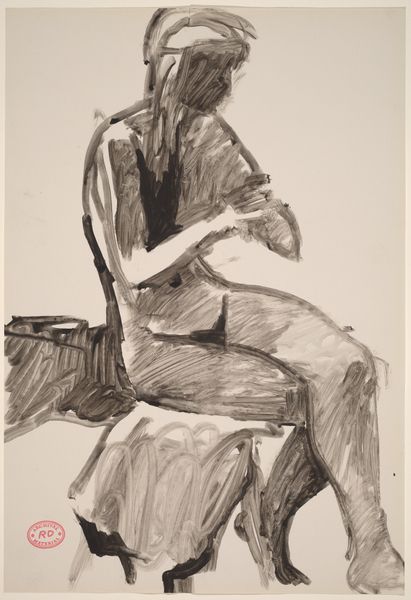![Untitled [seated woman in purple dress] by Richard Diebenkorn](/_next/image?url=https%3A%2F%2Fd2w8kbdekdi1gv.cloudfront.net%2FeyJidWNrZXQiOiAiYXJ0ZXJhLWltYWdlcy1idWNrZXQiLCAia2V5IjogImFydHdvcmtzL2MzZGM1ZjBjLWM3MWUtNDYwZC1hN2RhLTEyYTY2MGMwOTEzMC9jM2RjNWYwYy1jNzFlLTQ2MGQtYTdkYS0xMmE2NjBjMDkxMzBfZnVsbC5qcGciLCAiZWRpdHMiOiB7InJlc2l6ZSI6IHsid2lkdGgiOiAxOTIwLCAiaGVpZ2h0IjogMTkyMCwgImZpdCI6ICJpbnNpZGUifX19&w=3840&q=75)
drawing
#
drawing
#
abstract expressionism
#
abstract painting
#
possibly oil pastel
#
handmade artwork painting
#
oil painting
#
bay-area-figurative-movement
#
fluid art
#
acrylic on canvas
#
underpainting
#
arch
#
painting painterly
#
watercolor
Dimensions: overall: 30.2 x 22.5 cm (11 7/8 x 8 7/8 in.)
Copyright: National Gallery of Art: CC0 1.0
Curator: Richard Diebenkorn's "Untitled [seated woman in purple dress]", made sometime between 1955 and 1967. What strikes you first about it? Editor: Immediately, it's the figure’s posture and facelessness. She appears self-possessed but strangely anonymous, shrouded in an oppressive dark blue background, suggesting alienation or perhaps interiority? Curator: Considering Diebenkorn's milieu within mid-century California art, the dark background might represent more than personal isolation. This work appears in a time rife with social upheavals—the nascent civil rights movement, growing anxieties about Cold War politics—making one question the role of women in the political space. Is this woman observing or actively participating, and is the missing face a conscious obscuring? Editor: That's an interesting angle. I also see the way he juxtaposes that rich purple of her dress with the pale pinks and oranges of her skin and that jolt of yellow at the bottom. He disrupts any straightforward reading, creating tension. Could her “facelessness” also represent the objectification of women prevalent in art history itself? Curator: Exactly! The deliberate absence forces a confrontation with representation itself. It resists easy consumption. The painting pushes us to deconstruct not just her identity, but the very act of looking at a female figure, reflecting the broader political climate in which images of women are both pervasive and often deeply problematic. Editor: And even his medium seems relevant. It appears he uses loose washes of what may be watercolor that could connote vulnerability or perhaps, intentional erasure. Does the fluidity signify her unfixed role, not only as a figure within the art itself, but also as a figure moving fluidly through her own world? Curator: Certainly. These deliberately blurred lines invite the viewer to piece together their own narrative, challenging the authoritative position of the artist and gallery. It's about democratizing the narrative, forcing us to acknowledge our own biases in constructing the female identity in that specific era, within a greater social framework. Editor: Yes, precisely. Ultimately, the woman seated there becomes less about one individual and more a cipher, pregnant with meaning we are asked to decode, in conversation with art and societal histories. Curator: Absolutely, seeing her now has broadened my perception as well!
Comments
No comments
Be the first to comment and join the conversation on the ultimate creative platform.
